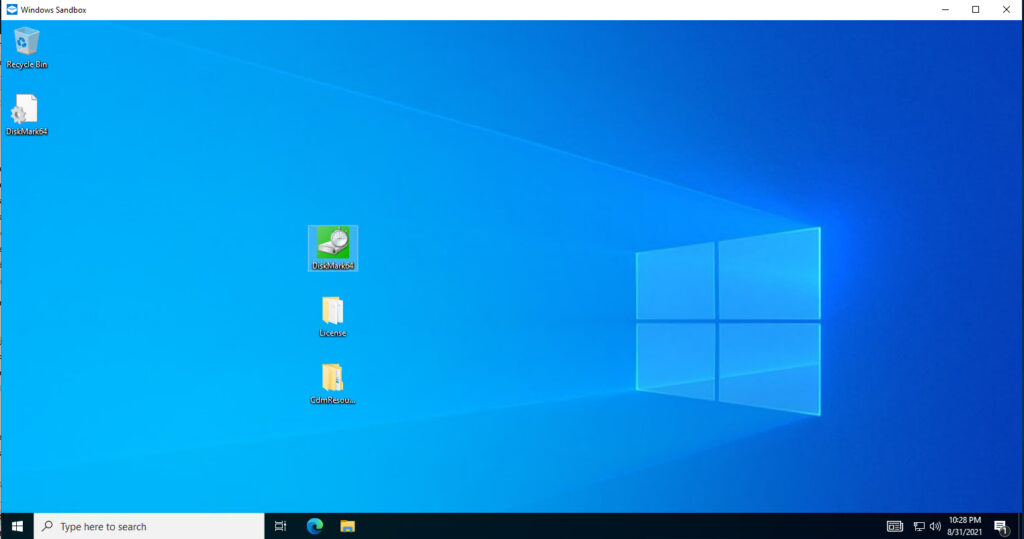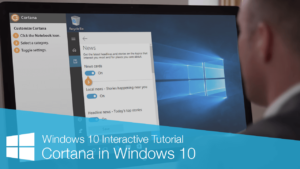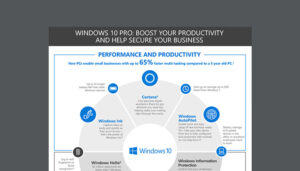Safe Spaces: Windows Sandbox and Secure Application Testing

Introduction
In the dynamic and ever-evolving landscape of cybersecurity, ensuring the safety and security of systems is paramount. Recognizing the need for a secure environment for testing untrusted applications, Microsoft introduced a revolutionary feature in Windows 10 – the Windows Sandbox. This comprehensive guide, titled “Safe Spaces: Windows Sandbox and Secure Application Testing,” explores the intricacies of Windows Sandbox, revealing its features, benefits, and the transformative impact it has on creating a safe space for testing applications without compromising system integrity. From understanding its architecture to practical applications, this guide aims to empower users with the knowledge needed to leverage the full potential of Windows Sandbox for secure application testing.
Unveiling Windows Sandbox: A Virtual Fortress for Testing
Windows Sandbox is a lightweight, isolated environment within Windows 10 that allows users to run untrusted applications safely. It provides a secure and disposable virtualized space, ensuring that any changes made within the Sandbox do not affect the underlying operating system. This feature is particularly valuable for users who need to test applications, browse potentially harmful websites, or execute untrusted scripts without jeopardizing the security of their main system.
Key Features of Windows Sandbox:
- Disposable Environment: Windows Sandbox creates a temporary, disposable environment for testing purposes. Once the Sandbox is closed, all changes, including installed applications and files, are discarded, ensuring a clean slate for each session.
- Integration with Host System: While providing isolation, Windows Sandbox is integrated with the host system. Users can copy files between the host and the Sandbox, facilitating the transfer of necessary files for testing.
- Hardware Virtualization Requirement: Windows Sandbox relies on hardware virtualization features, ensuring better performance and security. Users need to have a CPU that supports virtualization and have the feature enabled in the system’s BIOS.
- Transparent User Experience: The interface of Windows Sandbox mirrors that of the host system, providing a familiar environment for users. This transparency simplifies the testing process and ensures a seamless user experience.
Understanding Windows Sandbox Architecture: Isolation for Security
The architecture of Windows Sandbox is designed to provide a high level of isolation, preventing any changes made within the Sandbox from affecting the host system. Understanding the components of this architecture is essential to grasp its security features.
- Dynamic Kernel Translation (DKT): Windows Sandbox uses DKT to dynamically translate kernel calls between the host and the Sandbox. This ensures that the Sandbox has its isolated kernel, preventing any direct impact on the host’s kernel.
- Integrated Kernel: While the Sandbox has its kernel, it is integrated into the host’s Windows operating system. This integration allows for seamless communication and sharing of resources while maintaining the necessary isolation.
- Disposable Storage: Windows Sandbox uses disposable storage for its file system. All changes made within the Sandbox are stored in a temporary location, and upon closing the Sandbox, these changes are discarded. This ensures that no alterations persist on the host system.
- Network Isolation: The Sandbox is configured with network isolation by default. It has its network stack, preventing any direct communication with the host system or other devices on the local network. This network isolation adds an extra layer of security.
Activating Windows Sandbox: Creating a Secure Testing Ground
Enabling Windows Sandbox on a Windows 10 system involves a few simple steps, providing users with a secure space for testing untrusted applications.
- Check System Requirements: Ensure that the system meets the requirements for Windows Sandbox, including having a 64-bit version of Windows 10 Pro, Enterprise, or Education, a CPU with virtualization capabilities, and virtualization enabled in the system’s BIOS.
- Enable Virtualization in BIOS: Access the system’s BIOS settings and enable virtualization support. The specific steps vary depending on the system’s manufacturer.
- Enable Hyper-V Feature: Open PowerShell as an administrator and run the following command to enable the Hyper-V feature, which is necessary for Windows Sandbox:powershell
dism.exe /online /enable-feature /featurename:Microsoft-Hyper-V-All /all /norestart
- Reboot the System: After enabling Hyper-V, reboot the system to apply the changes.
- Enable Windows Sandbox Feature: Open PowerShell as an administrator and run the following command to enable the Windows Sandbox feature:powershell
dism.exe /online /enable-feature /featurename:Containers-DisposableClientVM /all /norestart
- Reboot the System: After enabling the Windows Sandbox feature, reboot the system to ensure the changes take effect.
- Launch Windows Sandbox: Once the system has restarted, open the Start menu, search for “Windows Sandbox,” and launch the application.
Benefits of Windows Sandbox: Security Without Compromise
Windows Sandbox offers a range of benefits, making it a powerful tool for secure application testing and experimentation:
- Security Isolation: The primary benefit of Windows Sandbox is the high level of security isolation it provides. Any changes made within the Sandbox, including potential malware infections, do not affect the host system. Once the Sandbox is closed, it returns to its clean state.
- Disposable Environment: Windows Sandbox creates a disposable environment for testing, allowing users to experiment with untrusted applications, websites, or scripts without worrying about long-term consequences. Each Sandbox session starts with a fresh, clean slate.
- Integration with Host System: While maintaining isolation, Windows Sandbox allows for integration with the host system. Users can easily copy files between the host and the Sandbox, making it convenient to transfer necessary files for testing.
- Familiar User Interface: The user interface of Windows Sandbox mirrors that of the host system, providing a familiar environment for users. This transparency ensures that users can navigate the Sandbox with ease, minimizing the learning curve.
Practical Applications of Windows Sandbox: A Secure Testing Ground
Windows Sandbox finds practical applications across various scenarios, providing a secure testing ground for a range of activities:
- Application Testing: Developers and IT professionals can use Windows Sandbox to test applications in an isolated environment. This is particularly valuable when dealing with untrusted or potentially harmful applications.
- Web Browsing: Users can use Windows Sandbox to safely browse potentially harmful websites or test web applications. Any malicious scripts or downloads are confined to the Sandbox, ensuring the host system remains unaffected.
- Script and Code Testing: Windows Sandbox is an ideal environment for testing scripts and code snippets. Users can experiment with scripts without worrying about unintended consequences on the main system.
- Security Research: Security researchers can leverage Windows Sandbox for analyzing malware and conducting security research. The isolation provided by the Sandbox ensures that any threats or vulnerabilities identified do not impact the host system.
Enhancing Security with Windows Sandbox and Windows Defender
The integration of Windows Sandbox with Windows Defender, the built-in antivirus and antimalware solution in Windows 10, adds an extra layer of security. Windows Defender works in tandem with Windows Sandbox to provide real-time protection and threat detection within the isolated testing environment.
Key Aspects of Security Integration:
- Real-Time Protection: Windows Defender extends its real-time protection to Windows Sandbox. Any files or activities within the Sandbox are subject to the same level of scrutiny and protection as those on the host system.
- Dynamic Threat Detection: Windows Defender’s dynamic threat detection capabilities, including behavior monitoring and cloud-based protection, apply to the Sandbox. This ensures that emerging threats are identified and mitigated within the isolated environment.
- Threat Quarantine: If Windows Defender detects a potential threat within Windows Sandbox, it can take appropriate actions, such as quarantining the threat. This prevents the threat from spreading beyond the Sandbox to the host system.
- Regular Definition Updates: Windows Defender within Windows Sandbox receives regular definition updates to stay current with the latest threat intelligence. This ensures that the isolated testing environment is equipped to handle evolving threats.
Activating Security Features: Fortifying the Sandbox
Ensuring the integration of Windows Defender with Windows Sandbox involves activating and configuring security features within Windows Defender settings. Here’s a step-by-step guide to activating these features:
- Enable Windows Defender: Ensure that Windows Defender is enabled and running on both the host system and within Windows Sandbox. Windows Defender is the default antivirus and antimalware solution in Windows 10, providing essential security features.
- Configure Real-Time Protection: In Windows Defender settings, configure real-time protection to include files within Windows Sandbox. This ensures that files are scanned for threats as they are accessed or modified within the Sandbox.
- Explore Threat Protection Settings: Familiarize yourself with the threat protection settings in Windows Defender. Ensure that cloud-based protection, automatic sample submission, and behavior monitoring are activated to enhance threat detection capabilities.
- Verify Definition Updates: Confirm that Windows Defender within Windows Sandbox is receiving regular definition updates. These updates are crucial for staying current with the latest threat intelligence and ensuring robust protection.
Benefits of Security Integration: A Shield for Testing Ground
The integration of Windows Defender with Windows Sandbox brings about a range of benefits, fortifying the secure testing ground provided by the Sandbox:
- Real-Time Threat Detection: Windows Defender performs real-time scanning of files within Windows Sandbox, ensuring that any potential threats are detected promptly. This proactive approach enhances the overall security posture of the isolated testing environment.
- Cloud-Based Protection: Windows Defender within Windows Sandbox benefits from cloud-based protection features. This includes access to threat intelligence databases and the ability to leverage the latest threat signatures and definitions to safeguard files.
- Behavior Monitoring: Windows Defender’s behavior monitoring capabilities extend to Windows Sandbox, providing an additional layer of security. Any suspicious activities or behaviors within the Sandbox are scrutinized to identify potential threats.
- Threat Quarantine: In the event that Windows Defender detects a potential threat within Windows Sandbox, it can take actions such as quarantining the threat. This prevents the threat from spreading beyond the Sandbox to the host system, ensuring containment.
Conclusion
Windows Sandbox stands as a testament to Microsoft’s commitment to providing users with a secure and versatile computing environment. In the realm of application testing and experimentation, Windows Sandbox shines as a beacon of innovation, offering a disposable and isolated space where users can test untrusted applications without compromising the integrity of their main system.
From its dynamic kernel translation to its disposable storage and seamless integration with Windows Defender, Windows Sandbox is a comprehensive solution for users seeking a secure testing ground. Whether it’s developers testing applications, security researchers analyzing malware, or users browsing potentially harmful websites, Windows Sandbox provides a safe space where experimentation is encouraged without fear of consequences.
As cybersecurity threats continue to evolve, Windows Sandbox represents a proactive approach to creating a secure computing environment. It empowers users to explore, experiment, and innovate with confidence, knowing that the Sandbox provides a protective barrier between the testing ground and the host system. Windows Sandbox is not just a feature; it’s a secure haven for users navigating the complex landscape of cybersecurity, where safety and experimentation coexist harmoniously.







